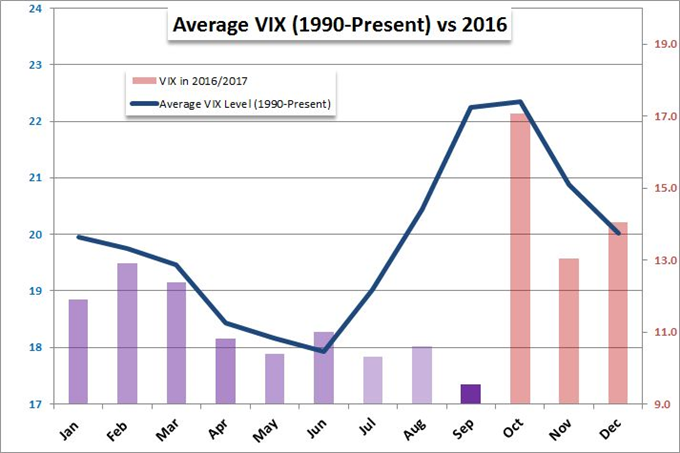The large manufacturing Index hit 22, its highest level since September 2007 and well above the 18 print expected. The large manufacturing outlook index hit 19, again well above the expected outcome which was 16. Small manufacturing also did well with output there at its best level since 2006. The survey wasn’t quite all good news though, with a few outlook indexes missing forecasts and planned capital expenditure doing likewise.
That said it did show a Japanese economy heading into the year’s final quarter in pretty good shape, but the Yen is disconnected to some extent from its own country’s economic numbers. Last week’s manufacturing data were similarly perky and similarly failed to budge the currency. The BoJ’s position is that ultra-loose monetary policy will not change until annualized consumer price inflation is sustainably above 2%. It’s at 0.7% presently so there’s a long way to go. While the BoJ sticks to that script, the economics have little chance of moving monetary policy and so little change of changing the Yen’s investment case.
This disconnect was clearly seen again on Monday, although market holidays in China and Australia will have seen markets more shallowly traded in any case. There is also an election looming in Japan which will see economics play second fiddle to politics until the results are known at the end of this month.

There was some good news for the BoJ on this front from the Tankan. Japanese firms continue to face labor shortages which raises the hope that previously elusive meaningful wage rises will bolster the economy’s pricing power.
The Yen has been under pressure against a generally stronger US Dollar for a month now, with USD/JPYrising sharply. That process seems to have run out of a little steam at present but, with interest-rate differentials so strongly in the greenback’s favour, and only likely to get more so, it is hard to see the Yen fighting back in the final three months of this year.

















